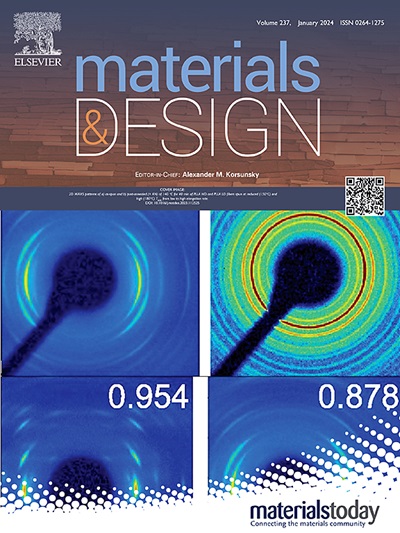Spatiotemporal Regulation of Ferrocene-Based MOFs: Harnessing Photothermal “Local Storm” and “Systemic Immune Cruise
IF 7.6
2区 材料科学
Q1 MATERIALS SCIENCE, MULTIDISCIPLINARY
引用次数: 0
Abstract
Ovarian cancer ranks among the most prevalent gynecologic malignancies, characterized by a high incidence and poor prognosis. However, the efficacy of conventional chemotherapy is often compromised by systemic toxicity and insufficient immune activation. To address these challenges, a zirconium-ferrocenyl metal–organic framework modified with the immune adjuvant glucan (Zr-Fc-MOF@Glu) was rationally designed to enable spatiotemporally controlled photothermal immunotherapy. Upon near-infrared (NIR) irradiation, Zr-Fc-MOF@Glu generates a localized photothermal effect, inducing tumor cell apoptosis and triggering an inflammatory “storm” within the tumor microenvironment. Concurrently, the glucan component acts as an immunomodulator, amplifying immune activation and initiating a robust systemic immune response, thereby enabling a “systemic immune cruise.” Both in vitro and in vivo evaluations demonstrated that this approach effectively inhibited tumor growth, enhanced immune responses, and minimized adverse effects. By integrating photothermal-induced local inflammatory activation with systemic immune mobilization, this strategy presents a promising avenue for precise and efficacious ovarian cancer therapy.

二茂铁mof的时空调控:利用光热“局部风暴”和“系统免疫巡航”
卵巢癌是最常见的妇科恶性肿瘤之一,其特点是发病率高,预后差。然而,常规化疗的疗效往往受到全身毒性和免疫激活不足的影响。为了解决这些挑战,合理设计了一种免疫佐剂葡聚糖修饰的锆-二茂铁金属-有机框架(Zr-Fc-MOF@Glu),以实现时空控制的光热免疫疗法。在近红外(NIR)照射下,Zr-Fc-MOF@Glu产生局部光热效应,诱导肿瘤细胞凋亡,并在肿瘤微环境中引发炎症“风暴”。同时,葡聚糖成分作为一种免疫调节剂,放大免疫激活并启动强大的全身免疫反应,从而实现“全身免疫巡航”。体外和体内评估都表明,这种方法有效地抑制了肿瘤生长,增强了免疫反应,并最大限度地减少了不良反应。通过将光热诱导的局部炎症激活与全身免疫动员相结合,该策略为精确有效的卵巢癌治疗提供了一条有希望的途径。
本文章由计算机程序翻译,如有差异,请以英文原文为准。
求助全文
约1分钟内获得全文
求助全文
来源期刊

Materials & Design
Engineering-Mechanical Engineering
CiteScore
14.30
自引率
7.10%
发文量
1028
审稿时长
85 days
期刊介绍:
Materials and Design is a multi-disciplinary journal that publishes original research reports, review articles, and express communications. The journal focuses on studying the structure and properties of inorganic and organic materials, advancements in synthesis, processing, characterization, and testing, the design of materials and engineering systems, and their applications in technology. It aims to bring together various aspects of materials science, engineering, physics, and chemistry.
The journal explores themes ranging from materials to design and aims to reveal the connections between natural and artificial materials, as well as experiment and modeling. Manuscripts submitted to Materials and Design should contain elements of discovery and surprise, as they often contribute new insights into the architecture and function of matter.
 求助内容:
求助内容: 应助结果提醒方式:
应助结果提醒方式:


